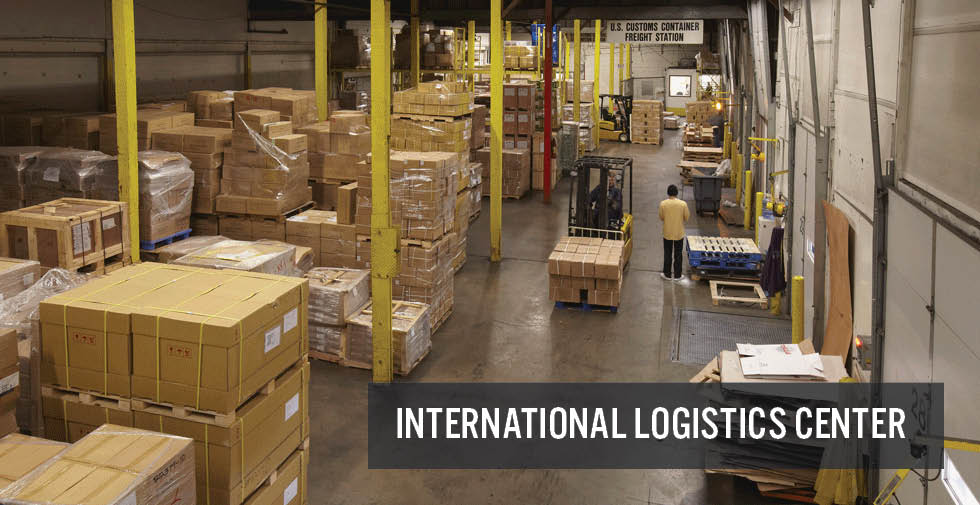With so many products being manufactured overseas, companies must have a strong international logistics plan to ensure that every order can be transported safely and efficiently while also staying cost-effective. There are many different parts, people, and processes to having an international logistics plan. Whether you are purchasing from foreign suppliers or manufacturing within your own plant overseas, getting products to the U.S. for distribution takes many steps. If you are shipping from the U.S. to countries for either retail distribution or consumer purchases, there are steps that must be taken to ensure safe delivery and a timely process.
Overseas Manufacturing
Why might a company decide to manufacture products overseas? Well, there are many different answers to that question depending on the type of product, company size, and industry requirements.
To begin with, when you consider the size of the world, there are collectively more manufacturers in other countries than in the United States. Secondly, it is no secret that many of these international manufacturers can offer more affordable materials and production costs. Because of all the variables involved with international logistics and production, finding the right team to establish and carry out your plan is all the more important.
Container Shipping or Air Freight
If products are manufactured overseas, one of the most expensive and time-consuming parts of the supply chain comes in the cost of transporting finished products to the United States after manufacturing has been completed. There are two options for this, air or sea. Finding the best solution for your industry and products is key.

One if by… Air
Air freight is the go-to option for companies that need their products fast. Air freight is much faster than the long wait times that shipping via ocean freight brings. The cost is generally much higher, but with shorter delivery times and faster time to market, this may be your only option.
With the ability to get air freight within days, rather than months, you can plan for distribution more readily, and ensure reduced wait times for your customers. Air freight also has the security of less possible damage to products, as air travel is most likely less arduous than sea transport.
Two if by Sea
If you have the time to spare or wish to save money, companies can choose to utilize shipping containers and cargo ships to transport from a foreign port to the United States.
This is a slower process, but as it is more affordable, many companies are happy to go this route. Sea transport is secure and safe, having many of the same security and inspection requirements as air. You can usually rest assured that your products are going to arrive safely and securely. Nonetheless, the nature of sea travel does bring some unique challenges that could lead to damaged goods or delays.
The Last Mile
Once the containers reach the US they are usually inspected and moved to a container yard. If the containers are being shipped to a destination far from where they arrived, you then need to account for rail freight transport services or over-the-road commercial logistics solutions to complete the journey.
Rail or truck transport can deliver your shipment to its location for storage or immediate distribution. You could also have your products delivered to one of our commercial warehousing locations for storage until they are needed.
International Distribution and Shipping
Manufacturing overseas is not the only reason companies use international logistics. Some companies will manufacture their products locally, then ship those products to consumers in foreign countries. This takes expertise to pack orders safely, provide the right documentation for inspections and ensure that all boxes are checked for proper shipping outside of the United States.
Timing
Whether you are receiving products from overseas or shipping them to international consumers, it is always going to be a time-consuming process that must be accounted for. The sheer distance is certainly a factor, but you also need to consider the details of the process. Interestingly, the actual transport time is not always the longest part of this international logistics experience.
For example, take intermodal and ocean cargo timing vs. air freight timing. If you are shipping via ocean, the transport across the sea may be the longest portion of the process. But when shipping via air freight, inspections and transfers take up a bulk of the time. Air freight is still a much faster service, but you should remember that the timing of international orders typically moves in weeks, not days. Learning how fast products can move to the correct destination is one of the most important pieces to remember with your international logistics plan.
While not every company will have an international component, exploring an international logistics plan can be a good move for companies looking to see all of their options. Online marketplaces have made it easier for companies to find manufacturers, products, and buyers in foreign countries, leading to a lower barrier of entry for international supply chains.
Elevate Your International Logistics Plan
One of the hardest parts of using overseas manufacturing or shipping internationally can be the inspections and transportation which is why a solid international logistics plan is a must for any growing business. It is also wise to work with those who have the experience to ensure seamless success with all the intricacies of playing on the international level.
Murphy Logistics has been involved with global transport for years allowing us to learn and understand all aspects of international logistics. Let our team help you work through the intricacies of an international logistics plan to take your business to the next level.
